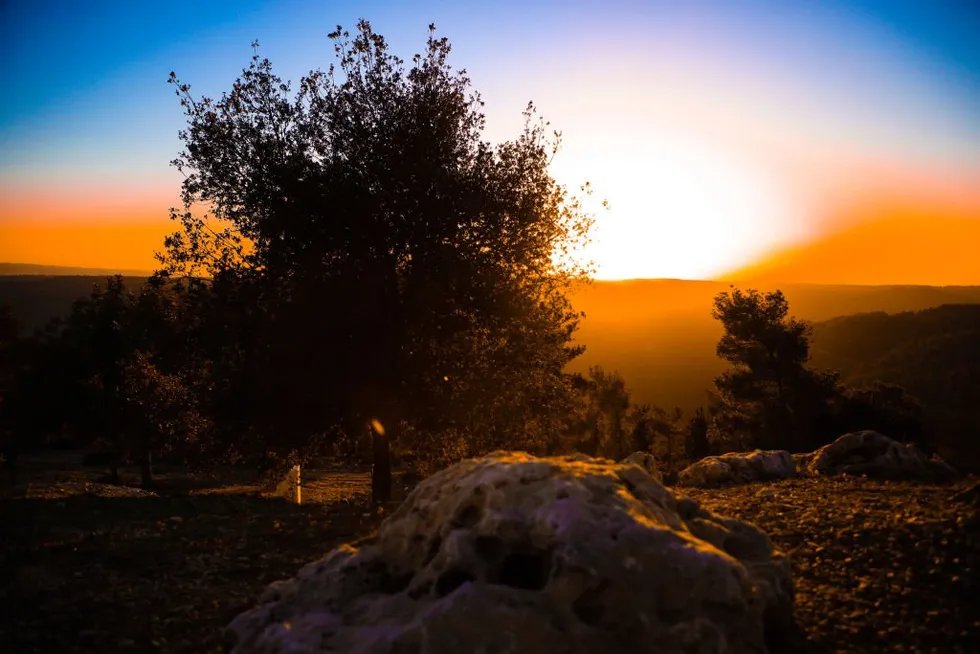Scientists revive 1,000-year-old seed from cave near Jerusalem, possibly resurrecting mysterious tree mentioned in the Bible

Scientists have revived a mysterious seed found in a cave near Jerusalem. Researchers say the seed is approximately 1,000 years old and may sprout a long-lost tree mentioned in the Bible.
In the mid-1980s, archaeologists excavated a cave in the lower Wadi el-Makkuk region north of Jerusalem. Inside the cave alongside a 26-foot cliff were Roman-era beads, woven ropes, and about a dozen ancient seeds — primarily for fruit-bearing date palms Phoenix dactylifera and Balanitis aegyptiaca, according to the Daily Mail. However, there was a 0.8-inch seed that intrigued scientists.
‘It’s been hugely exciting. It’s bringing something back to life from 1,000 years ago.’
Radiocarbon dating has estimated that the seed’s date of origin is somewhere between A.D. 993 and A.D. 1202.
Researchers believe the seed was brought into the cave by an animal.
“We don’t think it was brought by a human. The cave was a burial site and not inhabited,” Dr. Sarah Sallon of Hadassah University Medical Center told the Jerusalem Post.
Sallon noted that there were signs that the cave had been looted by grave robbers.
The seed — nicknamed “Sheba” — was planted in 2010. Five weeks later, a seedling emerged. Once the plant had bark, it yielded resin.
Scientists say Sheba is a species of Commiphora — part of the frankincense and myrrh family (Burseraceae) — that comprises roughly 200 living plant species.
Commiphora plants are mainly found across Africa, Madagascar, and the Arabian Peninsula.
Sheba can not be botanically named until it produces flowers and more is known about its physical structure, said Sallon.
Sheba has yielded enough mature leafy material for chemical and genetic analysis.
“The identity of biblical ‘tsori’ (translated in English as ‘balm’) has long been open to debate,” the researchers wrote in the study published this month in Communications Biology.
Biblical “tsori” is a medicinal extract with healing abilities mentioned in the books of Genesis, Jeremiah, and Ezekiel. The Bible refers to the healing resin in the historical region of Gilead, located on the east bank of the Jordan River between the Yarmuk River and the northern end of the Dead Sea — in what is today Jordan.
Sallon and her co-authors say there is a possibility that Sheba is a “Judean balsam” or “balm of Judea,” a now-extinct tree species that existed in the Southern Levant, a region comprising modern-day Israel, Palestine, and Jordan.
The Judean balsam was prized for its exquisite perfume and medicinal qualities in ancient times.
“The most valuable export of ancient Judea (modern-day Israel and Palestine) and described extensively by writers in antiquity, Judean Balsam, was highly prized for its fragrant aromatic resin ‘opobalsamum’ (Gk: ‘sap of balsamon’) and its many economic uses,” the researchers wrote.
The Judean balsam (Commiphora gileadensis) disappeared from the region by the ninth century.
Sallon said, “I sent samples (leaves, bark resin, and more) to Dr. Gavin Flamatti at the University of Western Australia, who is an expert on identifying fragrant compounds released by burning. No fragrant aromatic compounds were released, but they did find an abundance of very medicinal substances.”
Live Science reported, “Chemical analysis of Sheba’s leaves and resin revealed the tree is rich in pentacyclic triterpenoids, which are biologically active compounds with anti-inflammatory and anti-cancer properties.”
The researchers said phytochemical analysis of Sheba’s leaves and resin identified compounds associated with “wound healing and anti-inflammatory, anti-bacterial, antiviral, and anti-tumoral activity.”
“Using results of DNA sequencing, phylogenetic and phytochemical analysis in conjunction with historical and archaeological source material and phytogeographic data, we suggest ‘Sheba’ may represent an extinct (or at least extirpated) species of Commiphora, once native to the region, whose resinous extract ‘tsori’ (Hebrew: flow/drip) mentioned in biblical texts, was considered a valuable substance associated with healing but not described in these sources as fragrant,” the paper states.
Additional research is still needed to confirm whether Sheba is a Judean balsam.
Sallon said, “It’s been hugely exciting. It’s bringing something back to life from 1,000 years ago.”
Like Blaze News? Circumvent the censors, sign up for our newsletters, and get stories like this direct to your inbox. Sign up here!








